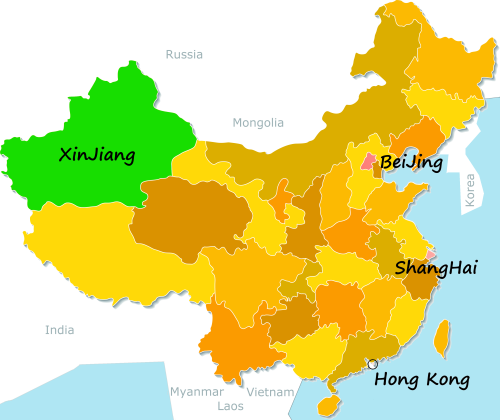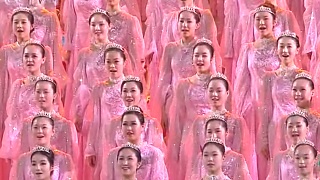
|
Old / Ancient Towns in China
Lijiang Old Town 丽江古城 (Lìjiāng Gǔchéng): Step back in time in the ancient town of Lijiang, a UNESCO World Heritage Site known for its well-preserved architecture, cobblestone streets, and picturesque canals. Lijiang Old Town is home to traditional Naxi culture and features historic landmarks such as the Mu Palace, the Black Dragon Pool, and the Wangu Tower. Visitors can wander through the maze-like streets, admire the intricate wooden buildings, and experience the vibrant local culture.
Fenghuang Ancient Town 凤凰古城 (Fènghuáng Gǔchéng): Discover the charm of Fenghuang Ancient Town, nestled along the banks of the Tuo River in Hunan Province. Fenghuang is known for its well-preserved Ming and Qing dynasty architecture, ancient bridges, and vibrant cultural scene. Visitors can stroll along the cobblestone streets, explore historic temples and ancestral halls, and admire the traditional Miao ethnic minority culture.
Pingyao Ancient Town 平遥古城 (Píngyáo Gǔchéng): Explore the ancient walled city of Pingyao, one of China's best-preserved ancient towns and a UNESCO World Heritage Site. Pingyao Ancient Town dates back over 2,700 years and is known for its well-preserved city walls, historic courtyards, and ancient temples. Visitors can walk along the fortified walls, explore the narrow alleyways, and learn about the town's rich history and cultural heritage.
Zhujiajiao Ancient Town 朱家角古镇 (Zhūjiājiǎo Gǔzhèn): Experience the charm of Zhujiajiao Ancient Town, located on the outskirts of Shanghai. Zhujiajiao is known for its scenic canals, stone bridges, and well-preserved Ming and Qing dynasty architecture. Visitors can take a boat ride along the canals, explore historic landmarks such as the Fangsheng Bridge and the Kezhi Garden, and sample local delicacies at traditional teahouses and restaurants.
Xitang Ancient Town 西塘古镇 (Xītáng Gǔzhèn): Discover the beauty of Xitang Ancient Town, a water town known for its tranquil canals, ancient bridges, and traditional architecture. Xitang has been featured in numerous films and is renowned for its picturesque scenery and romantic atmosphere. Visitors can stroll along the cobblestone streets, explore historic residences and temples, and take a boat ride along the scenic waterways.
Wuzhen Ancient Town 乌镇古镇 (Wūzhèn Gǔzhèn): Step back in time in the ancient water town of Wuzhen, known for its well-preserved Qing dynasty architecture, scenic canals, and traditional way of life. Wuzhen is divided into two main districts: the East Scenic Area, which features historic residences and workshops, and the West Scenic Area, which offers a glimpse into rural life along the waterways. Visitors can explore ancient temples, watch traditional performances, and sample local specialties such as Wuzhen rice wine and shadow puppetry.
Shaxi Ancient Town 沙溪古镇 (Shāxī Gǔzhèn): Explore the historic town of Shaxi, located along the ancient Tea Horse Road in Yunnan Province. Shaxi is known for its well-preserved Bai ethnic minority architecture, traditional cobblestone streets, and ancient market square. Visitors can wander through the town's labyrinth of alleyways, visit the historic Xingjiao Temple, and hike to the nearby Shibao Mountain to see its intricate Buddhist carvings.
Zhaoxing Dong Village 肇兴侗寨 (Zhàoxīng Dòngzhài): Experience the unique culture of the Dong ethnic minority in Zhaoxing Dong Village, located in Guizhou Province. Zhaoxing is known for its traditional wooden houses, ancient wind and rain bridges, and terraced rice paddies. Visitors can explore the village's cobblestone streets, visit the Drum Tower and the Wind and Rain Bridge, and attend traditional Dong festivals and performances.
Jinli Ancient Street 锦里古街 (Jǐnlǐ Gǔjiē): Immerse yourself in the lively atmosphere of Jinli Ancient Street, a historic street in Chengdu known for its traditional architecture, bustling markets, and vibrant street food scene. Jinli Street dates back over 2,000 years and has been restored to its former glory, with ancient-style buildings housing teahouses, shops, and snack stalls. Visitors can sample local delicacies such as Sichuan hotpot, stinky tofu, and spicy skewers, shop for souvenirs and handicrafts, and enjoy traditional performances such as Sichuan opera and shadow puppetry.
Pingle Ancient Town 平乐古镇 (Pínglè Gǔzhèn): Discover the charm of Pingle Ancient Town, located in Sichuan Province and known for its well-preserved Tang and Song dynasty architecture, ancient streets, and historic landmarks. Pingle is nestled in the picturesque foothills of the Qingcheng Mountains and is surrounded by lush forests, bamboo groves, and tea plantations. Visitors can explore the town's ancient streets, visit historic temples and ancestral halls, and enjoy panoramic views of the surrounding countryside from the Qingcheng Mountains.
|

 On the road to happiness : XinJiang
On the road to happiness : XinJiang






